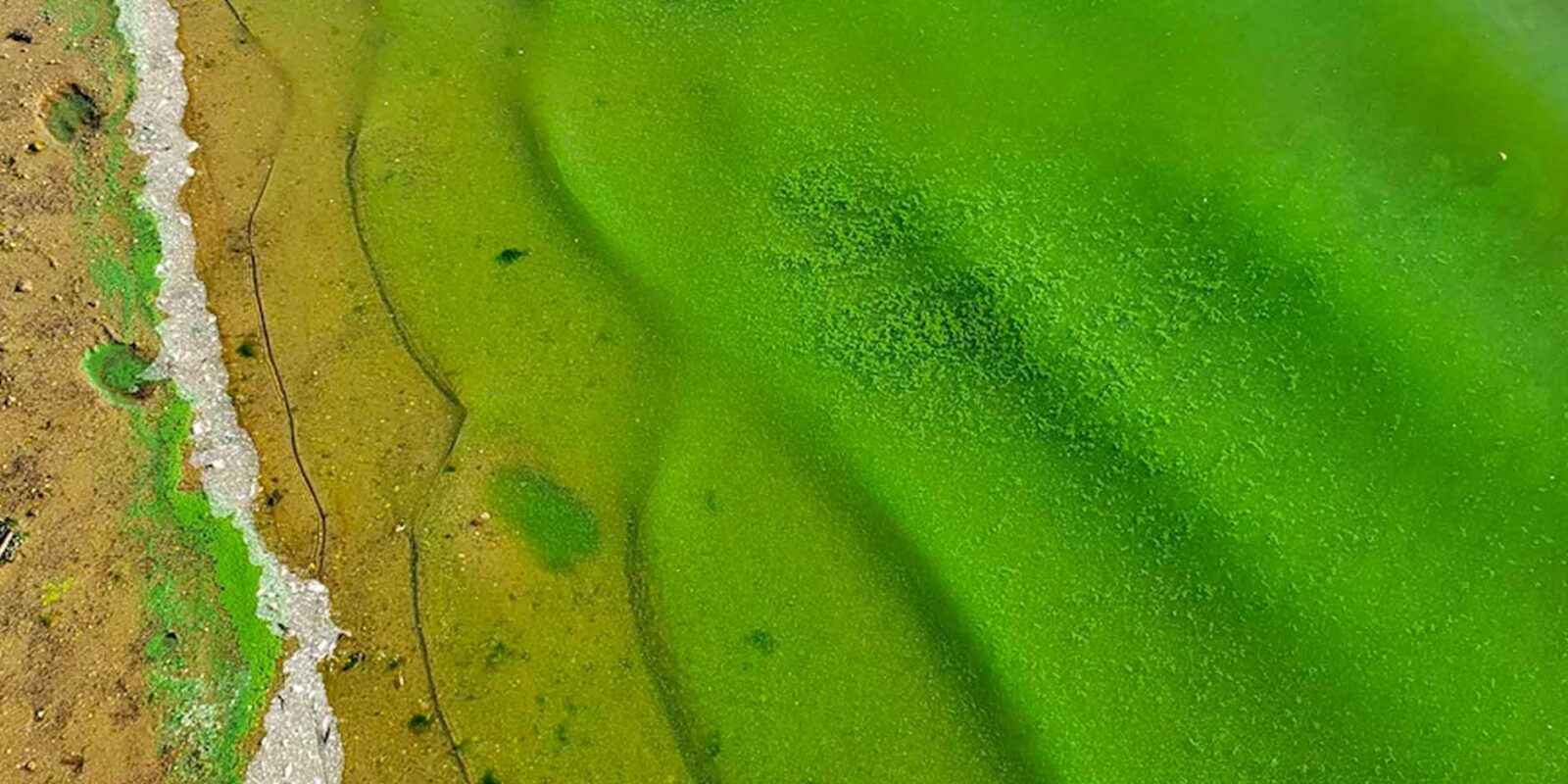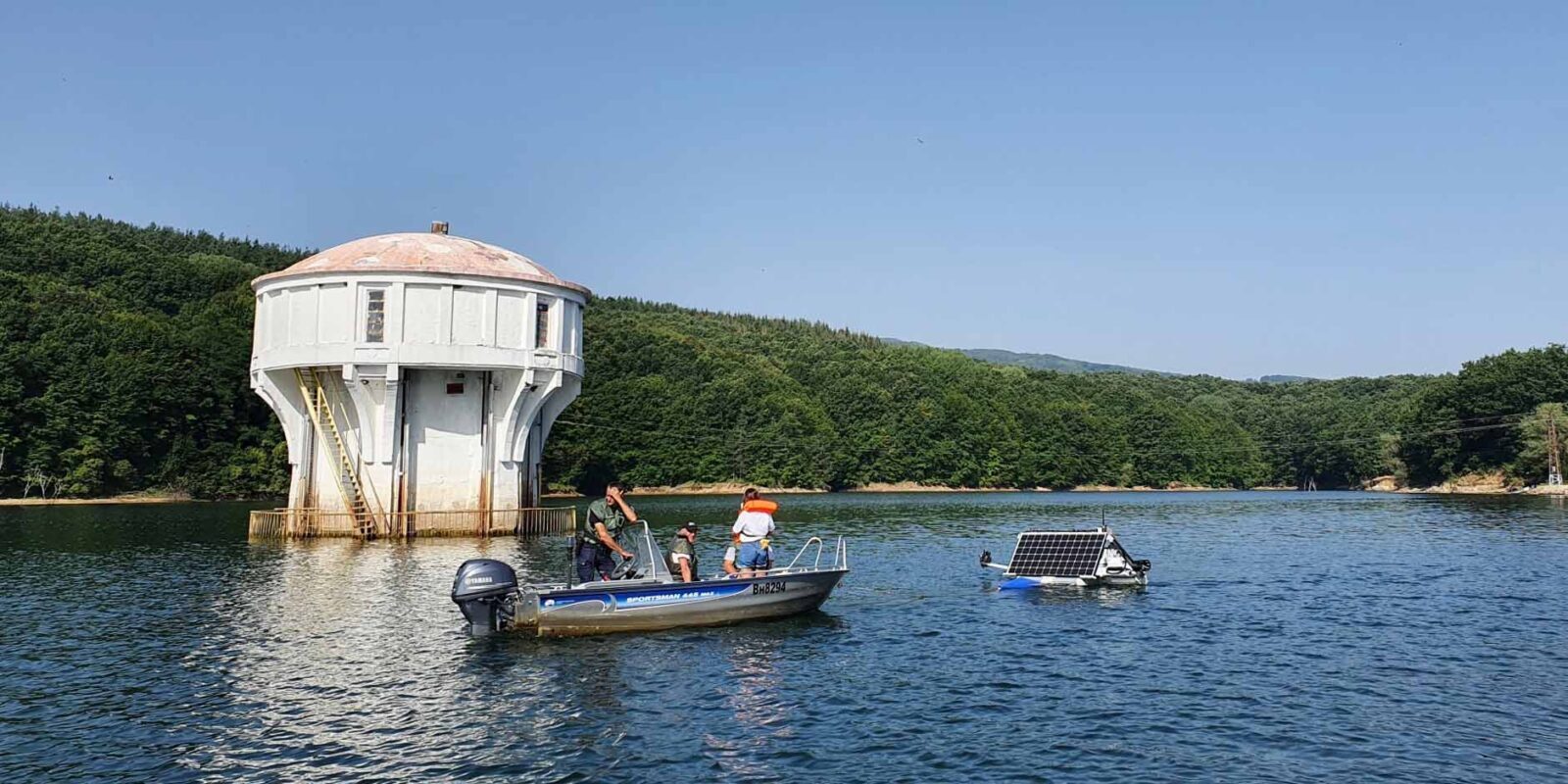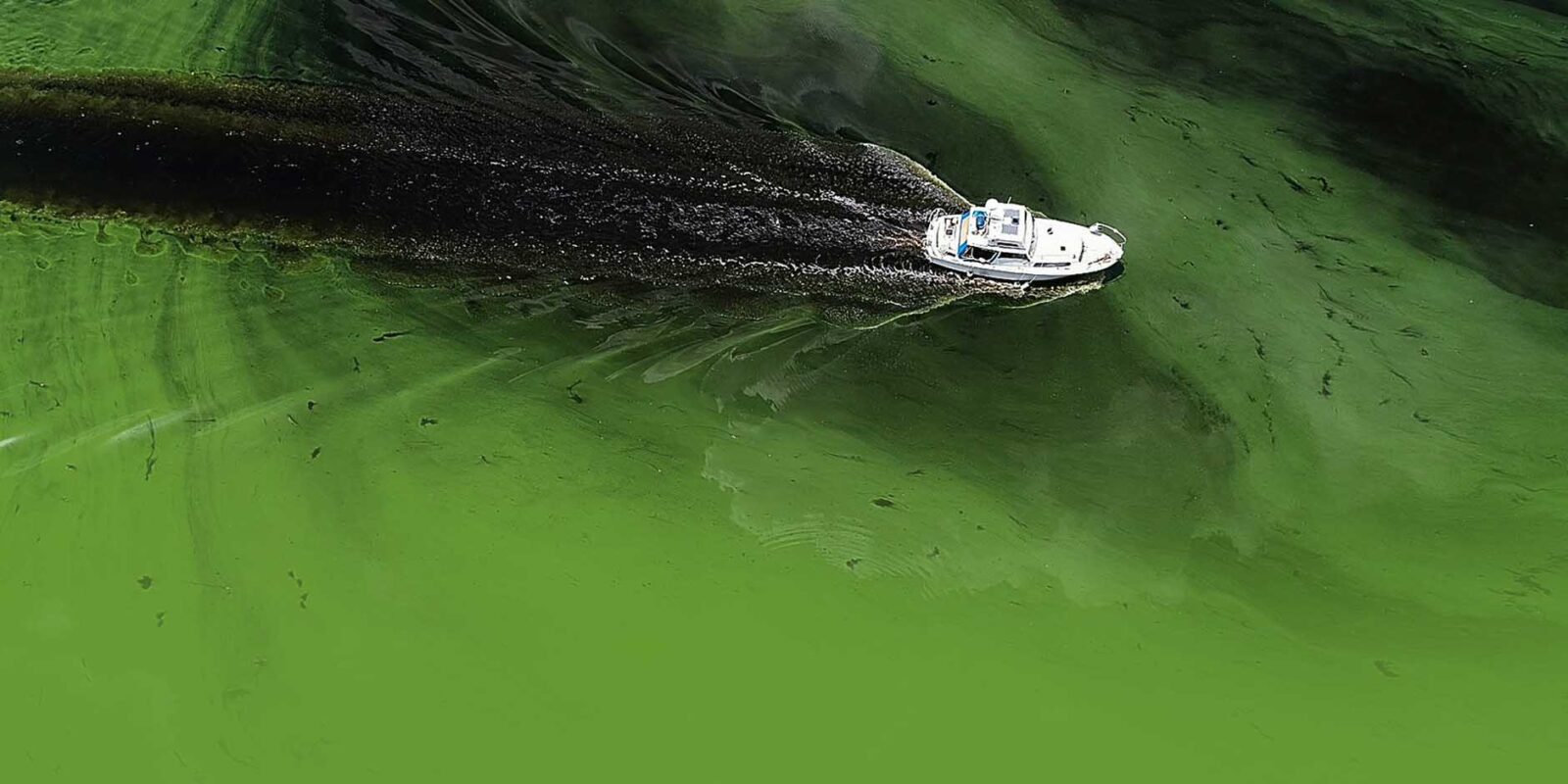Algae degrade water quality
Some algal species that grow in drinking water reservoirs produce toxins (geosmin & MIB), resulting in bad taste and foul odors. These toxins can also cause illnesses in humans and animals.
If not treated at the source, algae are likely to end up in treatment plants, clogging filters and pipes.
This raises concerns about water quality and safety, can cause service interruptions during treatment, or even operational shut-downs.
Talk to an expert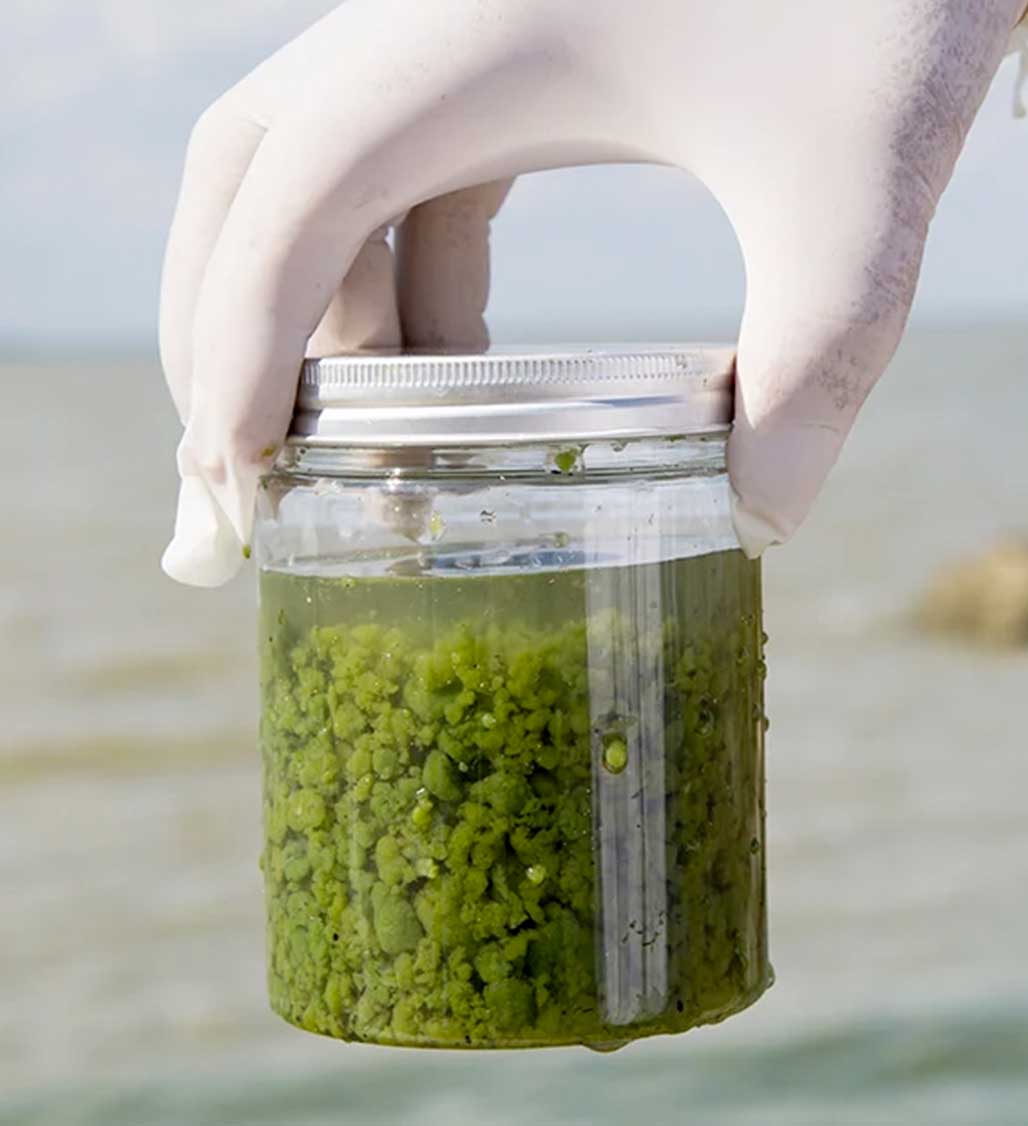
Benefits of ultrasonic algae treatment
Lower chemical expenses
Improve operations of filters and pipes
Prevent toxic algal blooms
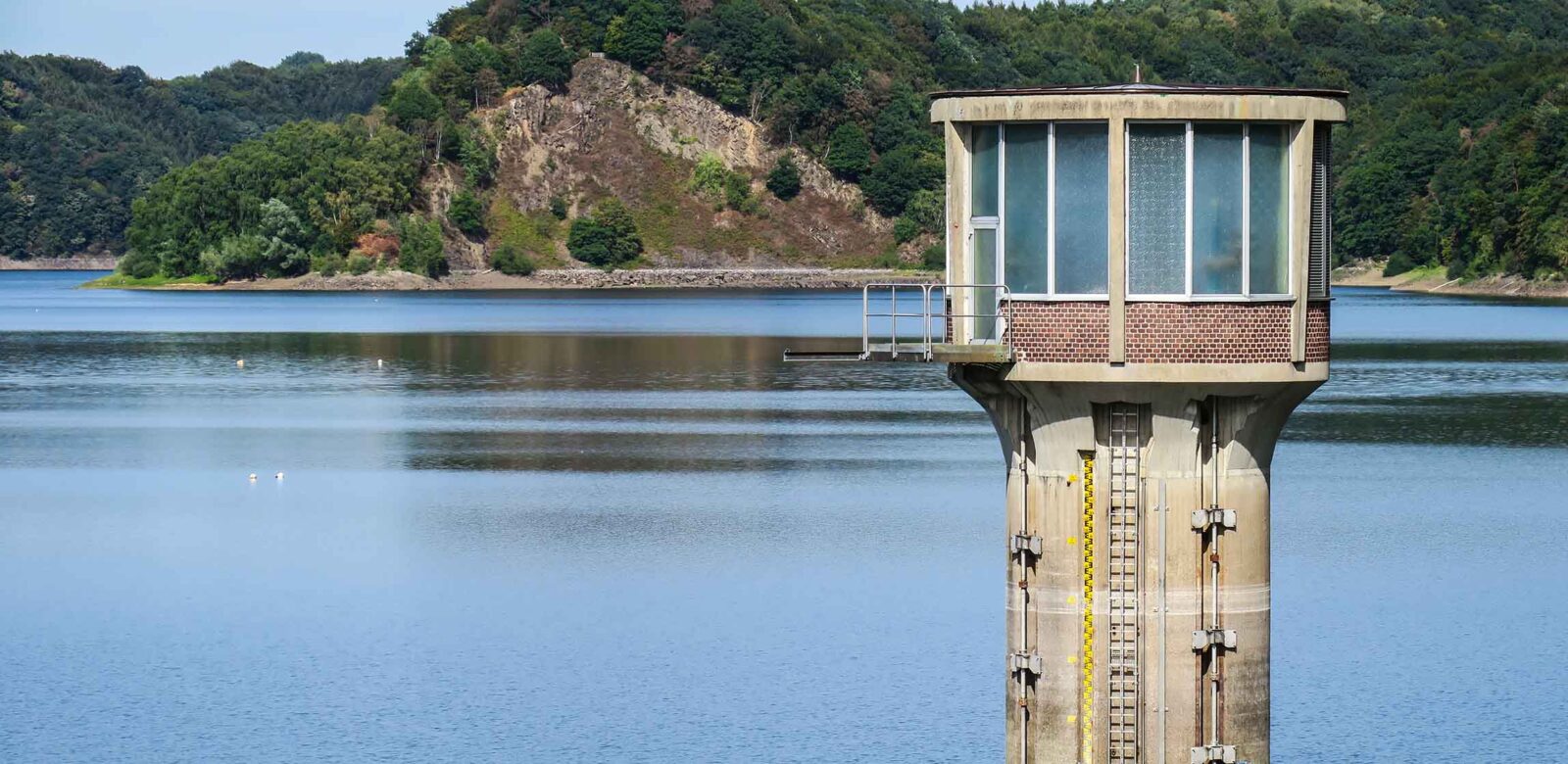
Protect your water supply
- Low-power ultrasound, no cavitation
- No release of algal toxins
- 100% safe for the environment
Control and predict algae blooms in your reservoir to avoid negative consequences within the entire treatment process.
When you consider raw water as a treatment step, you guarantee consistent drinking water quality and quantity.
The MPC-Buoy does this for you. It monitors water quality parameters in real-time, controls algae growth with ultrasound, and predicts new blooms days before they occur.
Some algal species that grow in drinking water reservoirs produce toxins (geosmin & MIB), resulting in bad taste and foul odors. These toxins can also cause illnesses in humans and animals.
If not treated at the source, algae are likely to end up in treatment plants, clogging filters and pipes.
This raises concerns about water quality and safety, can cause service interruptions during treatment, or even operational shut-downs.
MPC-Buoy
All-in-one solution for controlling algae in drinking water reservoirs.
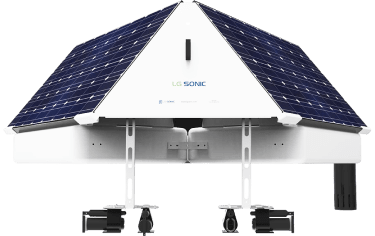
Questions?
Receive more information and a free quotation.
Frequently asked questions
-
What is the impact of LG Sonic ultrasound on zooplankton?
Recent studies commissioned by the Dutch water board and conducted by research agency Ecofide have concluded that the LG Sonic ultrasound is safe for fish, plants, zooplankton, and other aquatic organisms.
-
Why control the algae if nutrients are the problem?
Reducing nutrients is, of course, also necessary but difficult to achieve, even in the long-term. The majority of nutrient management methods are costly and require frequent dosing with unknown side-effects for the aquatic ecosystem. Besides, the duration and intensity of algal bloom events is strongly depended not only on nutrients but also on a combination of environmental factors, such as climate change, weather patterns, and an unbalanced ecosystem.
-
What kind of water does your ultrasound work in?
The MPC-Buoy technology can be installed in freshwater, salt water, and brackish water.
-
What’s the largest water body that has LG Sonic implemented? Any issues linking many buoys?
We have multiple projects with large numbers of MPC-Buoy units installed. For example, in Dominican Republic, 50 MPC-Buoys are in operation in a 7km2 reservoir. The buoys communicate with each other for optimal treatment.
-
What's the minimum depth of water required for LG Sonic treatment?
We recommend a minimum water depth of 3 feet / 1 meter.








